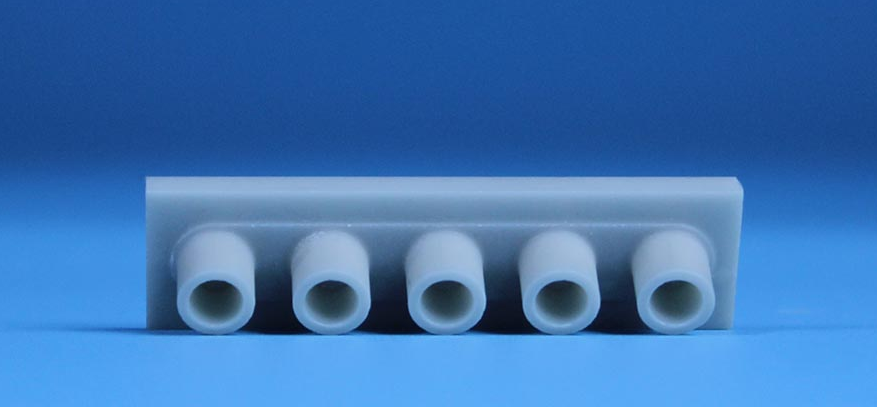

What are the materials that can make up ceramics
With the rise of high-tech industry, various new special ceramics have also achieved great development, and ceramics have increasingly become excellent structural materials and functional materials. They have higher temperature resistance, mechanical properties, special electrical properties and excellent chemical resistance than traditional ceramics.So what are the materials that can make up ceramics?
1.Alumina
Alumina is the more common name of Aluminium Oxide. It is a hard-wearing advanced ceramic offering an excellent combination of both mechanical and electrical properties. It is well-suited for a wide range of industrial applications.
Alumina features high hardness, wear resistance, low erosion levels, high temperature resistance, corrosion resistance, and bio-inertness. Its high temperature stability and thermal conductivity make it particularly suitable for high temperature applications such as thermocouple protection in high temperature measurement.

2.Aluminum Nitride
Aluminium Nitride is an excellent material to use if high thermal conductivity and electrical insulation properties are required; making it an ideal material for use in thermal management and electrical applications. Additionally, AlN is a common alternative to Beryllium Oxide (BeO) in the semiconductor industry as it is not a health hazard when machined. Aluminium Nitride has a coefficient of thermal expansion and electrical insulation properties that closely matches that of Silicon wafer material, making it an useful material for electronics applications where high temperatures and heat dissipation is often a problem.

3.Boron Nitride
Boron Nitride is an advanced synthetic ceramic material available in solid and powder form. Its unique properties – from high heat capacity and outstanding thermal conductivity to easy machinability, lubricity, low dielectric constant and superior dielectric strength – make boron nitride a truly outstanding material.
In its solid form, boron nitride is often referred to as “white graphite” because it has a microstructure similar to that of graphite. However, unlike graphite, boron nitride is an excellent electrical insulator that has a higher oxidation temperature. It offers high thermal conductivity and good thermal shock resistance and can be easily machined to close tolerances in virtually any shape. After machining, it is ready for use without additional heat treating or firing operations.

4.Boron carbide
Boron Carbide (B4C), also known as black diamond, is the third hardest material after diamond and cubic boron nitride. It is a suitable material for many high performance applications due to its attractive combination of properties. Its outstanding hardness makes it a suitable abrasive powder for lapping, polishing and water jet cutting of metals and ceramics. The combination of low specific weight, high hardness and reasonable toughness makes it a suitable material for body and vehicle armor. Boron carbide is also extensively used as control rods, shielding materials and as neutron detectors in nuclear reactors due to its ability to absorb neutrons without forming long lived radionuclide. As it is a p-type semiconductor, boron carbide can be a suitable candidate material for electronic devices that can be operated at high temperatures. Boron Carbide is also an excellent p-type thermoelectric material.

5.Silicon carbide
Silicon Carbide (SiC) has properties remarkably similar to those of diamond – it is one of the lightest, hardest, and strongest advanced ceramic materials and has exceptional thermal conductivity, resistance to acids, and low thermal expansion. Silicon Carbide is an excellent material to use when physical wear is an important consideration because it exhibits good erosion and abrasive resistance, making it useful in a variety of applications such as spray nozzles, shot blast nozzles and cyclone components.
